The author examined an auction catalog and came across the item described below:
410. Indo Persian Musket - circa 1800 - extremely unusual flintlock and striker assembly with unusual trigger - lots of inlays in the stock under barrel with a carved stock which may have held inlays at one point - overall length is 64" As shown in the photos below, it appears the lock is a Miquelet:
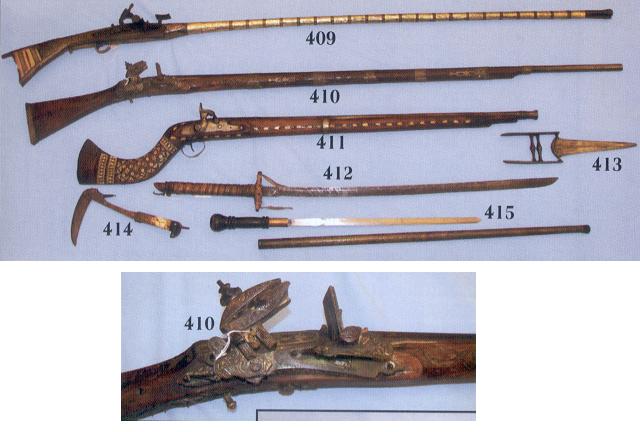
Miquelets are described at http://en.wikipedia.org/wiki/Miquelet.
Since the author does not currently have a gun of this type in his Flint Ignition Collection , he decided to place an absentee bid for the one above. One must be extremely cautious when placing absentee bids because there is no way to determine the actual condition or authenticity of the item. It is also possible that the item may be assigned an erroneous number or description on the web page or in the printed catalog. With this in mind, the author was willing to make a $100.00 gamble and place an absentee bid of that amount. Along with a few other bids he was willing to take a risk on, the author made up the following email message and sent it to the auction firm:
Sure wish I could make it to this auction. It's hard to determine the value and authenticity of items without being there to inspect them. The list that follows gives my absentee bids (I realize they are probably pretty low compared to the price that may be realized):
Lot # 400: $100.00
Lot # 506: $150.00
Lot # 580: $250.00
Lot # 664: $400.00
A few days later, an email message containing the information below was received:
You were a successful bidder on 1 item
#400 – Fist carved cane $100.00 10-% buyer’s premium $10.00 Packing/shipping/ins $20.00 Total due $130.00 A "Fist carved cane"? The author was confused. Upon re-examining the auction firm's web site and printed catalog as well as the email message sent to the auction firm, the author realized that he erroneously entered the number 410 as 400. A check for $130.00 for the unwanted "Fist carved cane", as described and shown below, was sent to the auction firm.
400. Early Fist Carved Cane - 35" - excellent
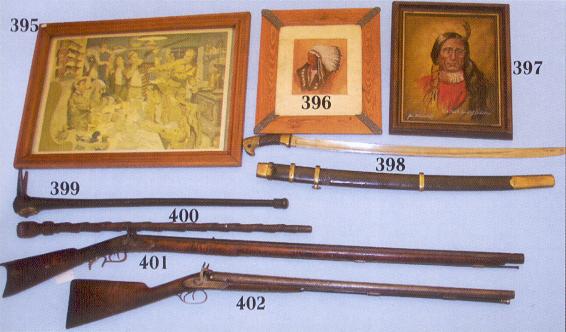
The photos below are of the Fist Carved Cane:

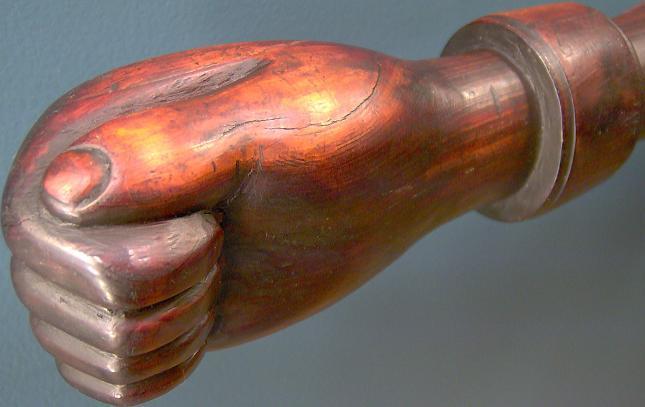




The only question that remains is: Who was the other person willing to bid $90.00 (plus 10% buyer's premium and possible packing/shipping/insurance) for such a cane?
For those interested, the final bid for item 410, the item the author meant to place a $100.00 bid on, was $150.00.
Other Bid Results
The other items that absentee bids were placed on along with the final bids realized follow:
506. European Matchlock Fortress Gun - circa 16th Century - very rare - very long and very heavy - used to repel attacking forces from a fortress wall - 84" overall length

Matchlocks are described at http://en.wikipedia.org/wiki/Matchlock.
The final bid for item 506 above, that a $150.00 absentee bid was placed on, was $875.00.
580. Percussion Mule Eared Over/Under Rifle/Shotgun/Rifle - 38 caliber, 50 caliber/20 Ga. Bottom - 30" barrels German silver hardware - fancy patch box - with Eagle - early wrap at wrist - very good I.J.R. Script on barrel
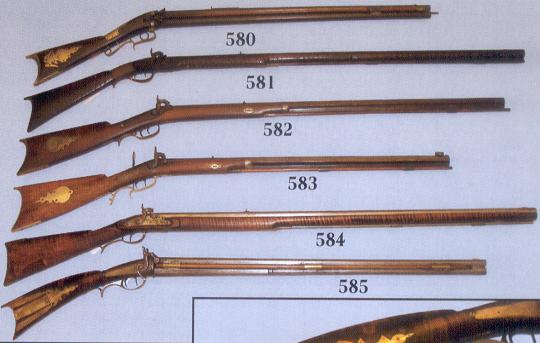
The author already has a Percussion Over/Under Rifle/Shotgun (.40 Caliber/20 Gauge), but in a different hammer configuration than that above, signed Wm. McClellan at Gun History Detective: Wm. McClellan.
The final bid for item 580 above, that a $250.00 absentee bid was placed on, was $800.00.
664. U.S. Springfield 1881, 20Ga. "Forager" Trap Door Shot Gun in V Good condition There was no photo given in the catalog. A Model 1881 Trapdoor shotgun is shown and described in the image below from FLAYDERMAN'S GUIDE TO ANTIQUE AMERICAN FIREARMS...and their values:
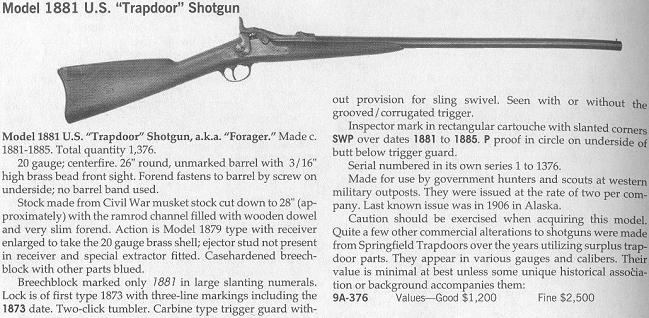
The final bid for item 664 above, that a $400.00 absentee bid was placed on, was $700.00.